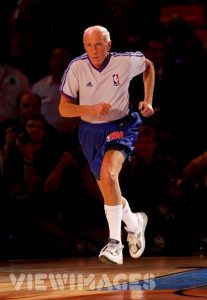 As midterm week approaches at Duke, numerous instances of cheating can be heard on the C1, on the plaza, and in Perkins.
As midterm week approaches at Duke, numerous instances of cheating can be heard on the C1, on the plaza, and in Perkins.
– “Oh, I STINFed that class. Had to study for orgo.”
– “Can I see your p-set? I don’t have time to do it.”
– “First time I’ve written a paper without Adderall!”
Pressures are high, and so we cut corners.
But why would students cheat for classes that “don’t count?” The online course company, Coursera, reported dozens of instances of plagiarism in a sci-fi fantasy course attended by 39,000 students.
The class (and all classes offered through Coursera) is free, peer-graded, and carries no academic credit, except a certificate of achievement. Fun fact: Duke Professor Walter Sinnott-Armstrong teaches the largest Coursera course — over 180,000 are enrolled.
So, why did the students cheat?
An article by The Chronicle of Higher Education suggests that many instances of plagiarism could be attributed to the various cultural background of the students. In countries such as China and Uganda, where I have taught, this seems plausible. Watching students study English by copying passages of a textbook over and over, it seems logical to me that they may lift sentences off Wikipedia or another author for a for an essay.
Nevertheless, confusion about what constitutes plagiarism can’t be the sole causal factor. Perhaps its also the unrelenting strive to “succeed” and the fear of failure. Even though Coursera is ungraded and open to the public, some of the students who voluntarily enroll may be similarly motivated as Duke Students. Thus, cutting corners may be a means to “achieve” and “succeed” in front of their peers.
So, does it matter?
At Duke, cheating has consequences for both the person and his or her peers. Curves are ruined, grades skewed. Plagiarizing on Coursera on the other hand, carries little academic consequence.
Given that students enroll for free, papers are peer-graded, and there is no academic credit, besides a certificate of completion, does it make sense to punish cheaters? What really is at stake?
I believe the answer is yes. Cheating is a categorical wrong in an academic setting. Imagine enrolling in the sci-fi class to seek intellectual fulfillment (or accomplishment), only to find yourself reading paper after paper of the synopsis of Frankenstein from Wikipedia.
Although we think of higher education as an outputs-oriented institution (think research, degrees, etc), it’s also a process as well. Avoiding the process of learning kills the meaning of education, especially in a “purer” learning experience such as Coursera where academic accreditation is not likely the end objective.
Coursera’s mission is to first and foremost foster a vibrant intellectual community. So while cheating doesn’t “count” in terms of “As, Bs, and Cs,” it certainly matters to the students and the future of the program. Granted, it’s silly to expect a “class” of 180,000 engaged, intellectually curious students. Nevertheless, plagiarism is certainly preventable, and worth preventing.

 We all have an image of the ideal Thanksgiving Day set in our heads. It is a day of cooking, feasting, and eventually laying in food comas. It is a day of the Macy’s Thanksgiving Day Parade, the Charlie Brown’s Thanksgiving special, and football. It is a day of laughter, catching up, and enjoying the wonderful company of family and close friends. It is a day of reflection, appreciation, and giving thanks. But, this has all changed in recent years.
We all have an image of the ideal Thanksgiving Day set in our heads. It is a day of cooking, feasting, and eventually laying in food comas. It is a day of the Macy’s Thanksgiving Day Parade, the Charlie Brown’s Thanksgiving special, and football. It is a day of laughter, catching up, and enjoying the wonderful company of family and close friends. It is a day of reflection, appreciation, and giving thanks. But, this has all changed in recent years.
 This
This 